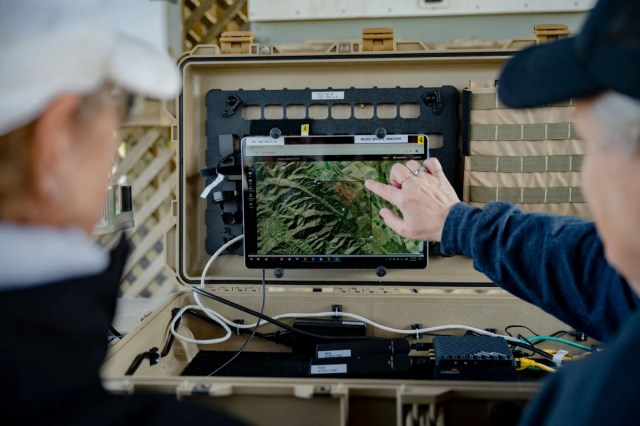NASA Unveils Innovative Airspace Management System for Wildland Fire Response
Nasa researchers have initiated validation of a groundbreaking airspace management system designed to facilitate the use of aircraft for wildland fire monitoring and suppression around the clock, even in low-visibility conditions.
From March 17 to 26, as part of the Advanced Capabilities for Emergency Response Operations (ACERO) project, NASA stationed its researchers across various strategic points in the Sierra de Salinas foothills in Monterey County, California. Their goal was to test and validate an effective, portable airspace management solution that addresses one of the critical challenges faced during aerial firefighting: managing airspace in poor visibility conditions.
“At NASA, we bring decades of aviation expertise to enhancements that improve the safety and efficiency of missions,” stated Carol Carroll, deputy associate administrator for NASA’s Aeronautics Research Mission Directorate. “In combating wildfires, we need every available tool at our disposal to protect lives and property. The ACERO technology provides responders with essential new capabilities for effective fire monitoring and response.”

A significant obstacle in wildland fire situations has been the inadequate tools available for managing airspace and coordinating air traffic under varying visibility conditions. Traditionally, aerial firefighting is limited to clear visibility hours when a Tactical Air Group Supervisor can oversee operations from a piloted aircraft to prevent collisions.
The ACERO initiative aims to overcome this challenge by providing an air boss capability, enabling remote operation of aircraft from the ground. Central to this project is the Portable Airspace Management System (PAMS), a compact unit that leverages decades of NASA’s research on air traffic and airspace management. With the PAMS, pilots can access vital information regarding aircraft locations and operational intentions, regardless of smoke or darkness.
During the Salinas tests, researchers assessed PAMS’s fundamental airspace management functions, including coordination strategies and automatic alerts when pilots deviate from their authorized flight paths or operations zones.
Using PAMS, researchers executed flight operations with a vertical takeoff and landing aircraft from Overwatch Aero, LLC, alongside two small NASA drones. Mimicking a wildfire response, the Overwatch aircraft communicated effectively with two separated PAMS units, successfully sharing critical data such as simulated fire zone details, aircraft locations, and flight plans, even amid challenging mountainous terrain.
“Field testing in genuine mountainous conditions presents many difficulties, but it yields insights that laboratory conditions simply cannot match,” remarked Dr. Min Xue, NASA’s ACERO project manager. “The successful tests have provided us with valuable data and pinpointed areas that need further enhancement.”

PAMS was utilized by the ground pilots to orchestrate drones that simulated aerial ignition operations—deliberate fires intended to manage vegetation, crucial for controlling wildfires and minimizing risks.
In addition, Joby Aviation’s remotely piloted aircraft, comparable in size to a Cessna Grand Caravan, actively participated in the testing. PAMS successfully exchanged vital flight data with Joby’s mission management software, marking the first successful interaction of PAMS with an optionally piloted aircraft.
Officials from the California Department of Forestry and Fire Protection (CAL FIRE) were present during the evaluation, providing insights on the system’s performance, potential for enhancing wildland fire air traffic management, and integration into emergency operations.
“The NASA ACERO program’s advancements in portable airspace management are commendable,” said Marcus Hernandez, deputy chief for CAL FIRE’s Office of Wildfire Technology. “The collaboration between federal, state, and local entities is essential for addressing both safety and regulatory hurdles while advancing technology.”

These recent tests build upon successful PAMS evaluations conducted in Watsonville, California, in November 2024. ACERO aims to utilize data and feedback from wildland fire agencies to enhance PAMS functionalities and to continue exhibiting more advanced data-sharing capabilities in future endeavors.
Nasa’s ACERO program aspires to validate this innovative technology for practical deployment in the field by wildland fire crews, ultimately aiding in life and property protection efforts. This initiative is overseen by NASA’s Airspace Operations and Safety Program, aligning with the agency’s broader Advanced Air Mobility mission.














